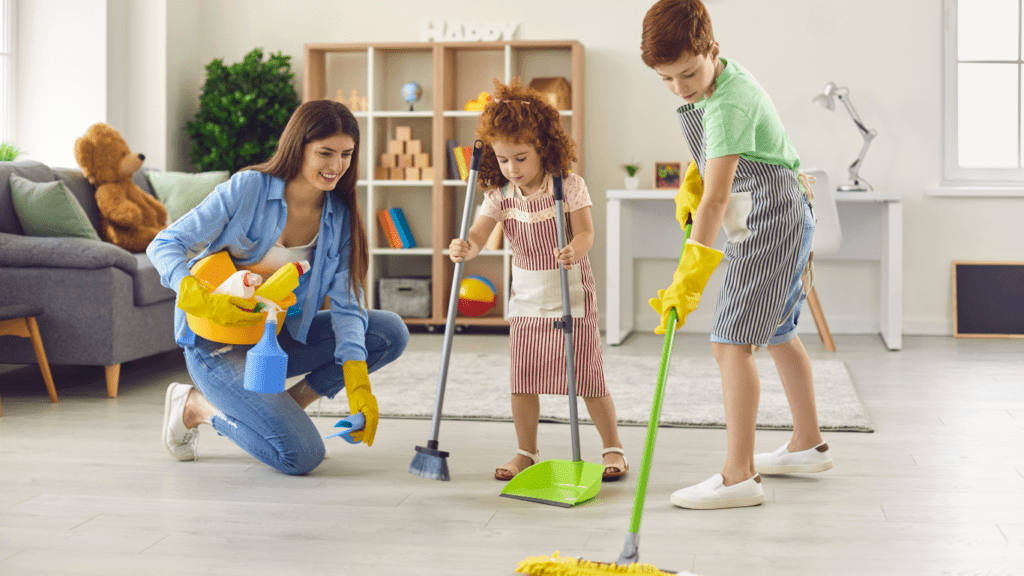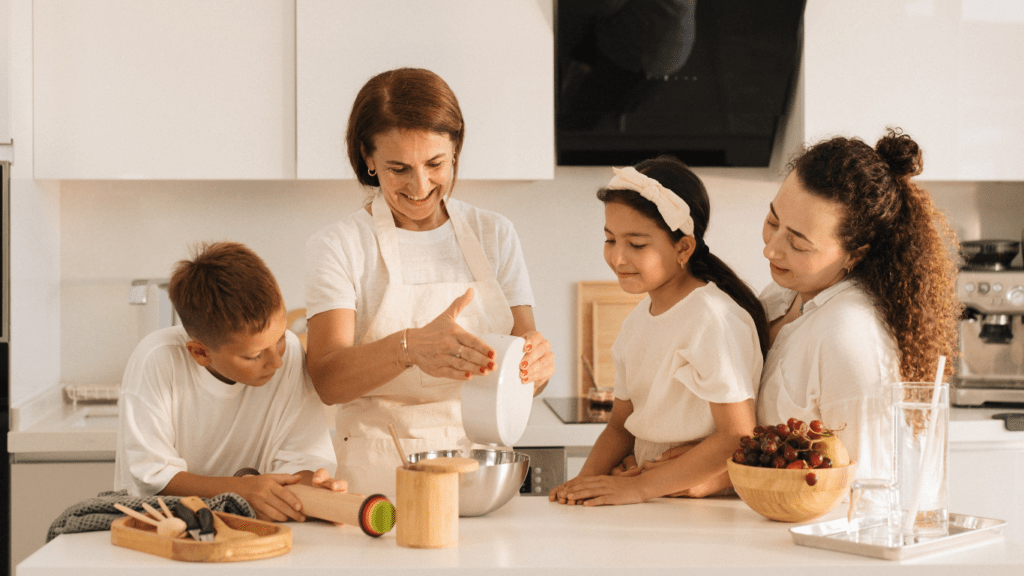Keeping a home tidy with kids around feels like an impossible task. Toys scattered across the floor, art supplies left on the table, and clothes in every corner can make any parent feel overwhelmed. But what if I told you there are simple hacks to bring order to your chaos?
Why Organizing Your Home with Kids is Challenging
Children tend to create clutter quickly, requiring constant tidying to maintain order. Their toys, clothes, and school supplies often end up scattered throughout the house. This continuous cycle can make it seem like there’s never a break from cleaning.
Flexibility is crucial in organizing a home with kids since their needs change frequently. For example, a toddler’s play area has different requirements compared to a teenager’s study space. You constantly adjust storage solutions to accommodate these evolving needs.
Time management becomes complex when balancing household chores and parenting responsibilities. With busy schedules, finding dedicated time to organize can be challenging. Multitasking between supervising children and maintaining a tidy home can lead to incomplete tasks.
Limited space intensifies the difficulty of organizing. Smaller homes or apartments may not have enough room for all belongings, making it hard to find suitable storage solutions. When toys and necessities multiply, managing the available space efficiently becomes essential.
Consistency can be hard to achieve since children often resist routines. Establishing and maintaining organizing habits involves constant effort and patience. Inconsistent follow-through from day to day can disrupt the overall tidiness of the home.
Teaching kids how to organize involves additional effort. It’s vital to create a system that’s easy for them to follow. For instance, color-coded bins or labeled shelves can help, but reinforcing their use requires persistence. Getting children involved in maintaining order fosters a sense of responsibility, though this process takes time.
In embracing these challenges with effective strategies, parents can create a more organized and peaceful home environment.
Planning Your Organization Strategy

Effective planning paves the way for an organized home, especially with kids. Establishing a clear strategy avoids wasted efforts and ensures consistent results.
Setting Realistic Goals
- Achieving an organized home starts with setting realistic goals.
- Identify the main problem areas and prioritize them based on urgency. For example, focus first on high-traffic areas like the living room or kitchen, where clutter accumulates quickly.
- Avoid aiming for perfection; aim for functionality and ease of maintenance.
- Break larger tasks into smaller, manageable steps. Set specific targets, like decluttering the playroom over the weekend, to maintain motivation and track progress.
- Regularly reassess goals to ensure they remain attainable and aligned with family dynamics.
Allocating Time and Resources
Time and resource allocation enhances the efficacy of your strategy. Dedicate specific times for organizing tasks, incorporating them into daily or weekly routines. For instance, tackle smaller tasks like toy sorting during the kids’ nap times. Invest in storage solutions that suit your family’s needs. Use clear bins, shelving units, and label makers to create a system that’s easy for everyone to follow. Set aside a budget for essential organizational tools, planning purchases during sales or discount periods. Enlist family members’ help by assigning age-appropriate tasks, fostering teamwork, and sharing the responsibility of maintaining order.
Simple Storage Solutions
Organizing a home with kids requires practical and effective storage solutions. Here are some simple hacks to keep things tidy.
Utilizing Storage Bins and Baskets
Storage bins and baskets provide versatile and accessible storage options. Transparent bins make it easy to see contents, helping kids find what they need. Use different sizes and shapes to fit various items, such as toys, books, and clothing. Baskets with handles can be easily moved, making cleanup a quick task. Place bins and baskets in reachable areas for kids to encourage them to put things away themselves.
Labeling Everything
Labels offer clarity and structure, making it easier to keep things organized. Use clear and simple labels for bins, shelves, and drawers. For younger children, consider using picture labels along with words to help them understand where items belong. Printable labels or laminated tags can withstand wear and tear, ensuring longevity. Labeling can also help with sorting and categorizing, making it easier to find and store items quickly.
Installing Shelves and Hooks
Shelves and hooks maximize vertical space, providing additional storage options. Install shelves at various heights to accommodate different item sizes and make them accessible for children. Floating shelves work well in smaller spaces, adding storage without taking up floor space. Use hooks for hanging items like:
- bags
- hats
- coats
Placing hooks at kid-friendly heights encourages children to hang up their belongings, promoting tidiness.
Involving Kids in the Process
Involving kids in the organization process fosters responsibility and reduces the clutter burden. By assigning age-appropriate tasks and making organization fun, children can contribute effectively.
Assigning Age-Appropriate Tasks
Assigning age-appropriate tasks ensures kids participate meaningfully. Preschoolers can pick up toys or place books on shelves. Elementary-aged children can sort laundry or set the dining table. Teenagers can manage more complex chores like organizing their closets. Tailoring tasks to their abilities promotes consistency and reduces resistance.
Making Organization Fun
Turning organization into a fun activity keeps kids engaged. Create challenges like “Who can clean up the fastest?” or use colorful bins with their favorite designs. Interactive elements like reward charts can motivate kids to maintain tidiness. Use fun labels with images for younger kids. Making the process enjoyable encourages children to participate willingly.
Maintaining the Organization
Maintaining an organized home with kids requires consistent effort and a strategic approach. By establishing regular routines, parents can keep the chaos at bay while fostering good habits in children.
Daily Cleanup Routines
Incorporate daily routines into your family’s schedule. By setting aside a few minutes each day for tidying up, the overall workload becomes more manageable. Encourage kids to pick up toys before bedtime and put away their clothes after changing. Make use of storage bins and baskets; they’re versatile and accessible, helping kids learn where their items belong. Using labeled containers simplifies this process and enhances clarity.
Weekly and Monthly Tasks
Establish weekly and monthly tasks to tackle larger organizational needs. Weekly tasks might include vacuuming, dusting, or sorting through mail. Monthly tasks could involve deep cleaning specific areas like the pantry or closets. Using a calendar to assign and track these tasks ensures nothing gets overlooked. Breaking them down into smaller steps makes them less overwhelming. Allocating specific times for these activities can help integrate them seamlessly into your routine, fostering a consistently tidy home environment.




